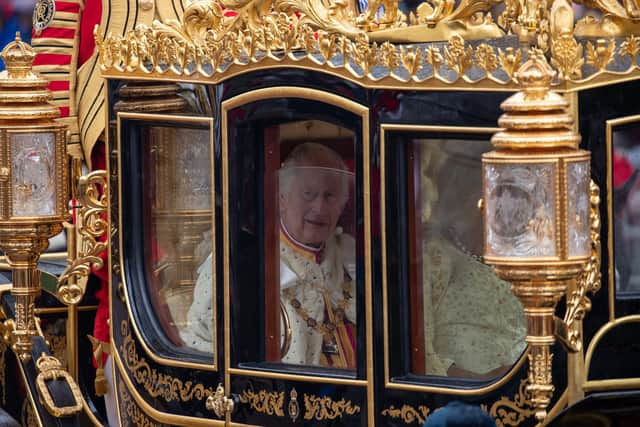The Coronation was a spectacular reminder of Christian values - Bill Carmichael
It came at the point right at the beginning of the service when a 14-year-old Samuel Strachan, the longest serving chorister of the Chapel Royal, welcomed Charles in a clear booming voice that carried no hint of nerves, with the words: “As children of the Kingdom of God we welcome you in the name of the King of Kings.”
And the King, looking more nervous than his young interlocutor, replied: “In his name and after his example I come not to be served but to serve.”
Advertisement
Hide AdAdvertisement
Hide Ad“I come not to be served, but to serve”. Those few words in a nutshell carry the whole meaning of the Coronation ceremony, the Monarchy and Christianity itself.


If it is not about service there is no point in a hereditary monarchy, and it is impossible not to hear in Charles’s words strong echoes of his mother’s famous speech made more than 70 years ago.
In 1947, on the occasion of her 21st birthday, the then Princess Elizabeth made a remarkable pledge for someone so young. She said: “I declare before you that my whole life whether it be long or short shall be devoted to your service and the service of our great imperial family to which we all belong.” Even more remarkably, she kept that promise for more than seven decades.
The young chorister’s welcome was just one highlight of the ceremony, and there were plenty of others.
Advertisement
Hide AdAdvertisement
Hide AdFor example, Charles' pensive facade cracked with a clear show of emotion after his son, The Prince of Wales, placed a kiss of fealty on his cheek. It was very touching and I think it was from that moment onwards that it looked as though the King was beginning to relax and enjoy the event.
The music throughout was a delight, in particular for me a Gloria composed by the English composer William Bird, a staunch Catholic at a time of great religious strife in the 1580s, when any allegiance to the Pope could cost you your life.
I was still pondering this when a short time later Cardinal Vincent Nichols, leader of the UK’s Roman Catholics and Archbishop of Westminster, appeared on the television screen - the first catholic bishop to play a formal role in the Coronation of a monarch since the Reformation.
It is an indication of how far we have come as a country that when Elizabeth was crowned in 1953, Roman Catholics were not permitted to attend Anglican church services.
Advertisement
Hide AdAdvertisement
Hide AdThe ceremony was firmly based on Protestant Christianity - the King, for example, was required to profess publicly that he is a “faithful Protestant”.
But in a significant show of unity clearly designed to reflect modern Britain, faith leaders from Buddhist, Hindu, Jewish, Muslim and Sikh traditions also played a symbolically important role.
I was hugely impressed by the young choristers and the look of intense concentration on their faces as they navigated complex and difficult music, alternatively looking at the score and glancing towards the choir master conducting the performance.
An unexpected - for me at least - starring role fell to a politician, Penny Mordaunt, Leader of the House of Commons.
Advertisement
Hide AdAdvertisement
Hide AdAs Lord President of the Privy Council she played a prominent part in proceedings, presenting regalia to the King and most notedly wielding a hefty-looking ceremonial sword for much of the ceremony.
She played a blinder, and I can’t be the only person who thought: ‘She must have arms of steel’.
There was a lighter moment during the actual crowning, when the Archbishop of Canterbury, Justin Welby, glanced down at the King to ensure he had placed the heavy headpiece correctly.
Queen Camilla, meanwhile, looked like she wanted to take her crown from the Archbishop’s hands so she could place it on her head properly.
Advertisement
Hide AdAdvertisement
Hide AdBut perhaps most moving of all was the most sacred part of the ceremony, when Charles was stripped of his finery in preparation for the anointing, using oil made in the Mount of Olives and consecrated at the Church of the Holy Sepulchre in Jerusalem.
Off came the ermines and silks, and Charles, an ordinary mortal man, was obliged to face his creator dressed only in a plain white shirt.
It was a powerful reminder that even the most mighty are humbled before God.